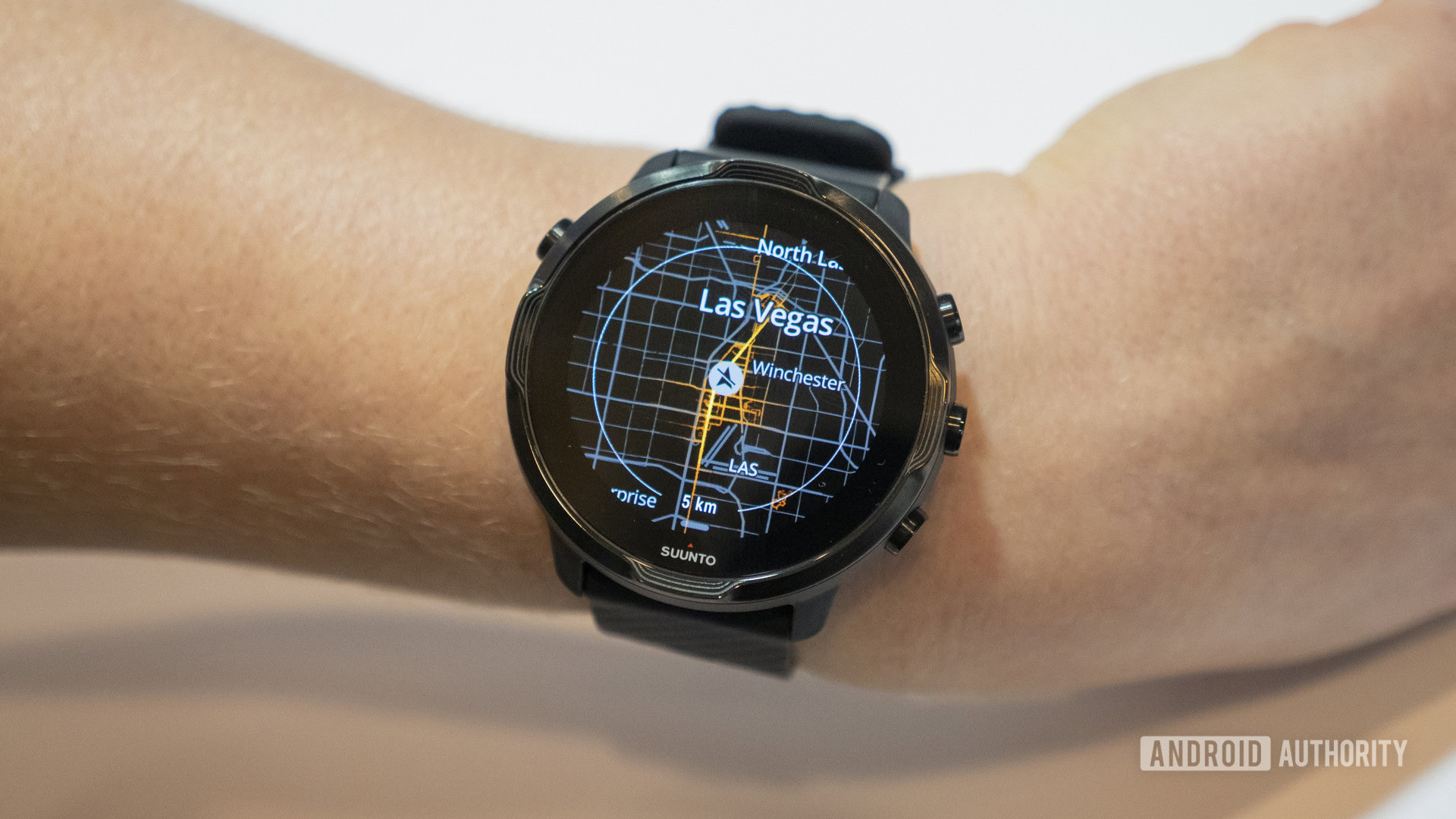Affiliate links on Android Authority may earn us a commission. Learn more.
The Suunto 7 has a trick to make battery life last so long: It's all in the SoC
January 8, 2020

Suunto surprised us all at CES 2020 with the launch of the Suunto 7, its very first Wear OS smartwatch. It has plenty of features for advanced athletes like offline maps, Suunto Heatmaps, a built-in GPS, and a heart rate sensor. But as soon as Suunto told me it was launching a watch on Google’s platform, my first thought was “How bad will battery life be?”
Wear OS is traditionally very hard on smartwatch battery life, causing most Wear OS watches to last only a day or so on one charge. Thus, manufacturers have had to come up with their own ways of making Wear OS battery life not totally suck. Fossil, for instance, has received a lot of praise for developing its own custom battery modes.
Suunto is going a different route, though. It’s using the Qualcomm Snapdragon Wear 3100’s built-in power-saving sports modes to eke out as much battery life as it can. In fact, it’s the only Wear OS watch to do so.
When Qualcomm announced the Snapdragon 3100 SoC, it boasted the chip’s power-saving capabilities claiming the headline feature is the new ultra-low-power, always-on co-processor. This co-processor is able to switch off the main processor at certain times, allowing the watch to consume far less battery.
That’s great! Unfortunately, the first smartwatches with the 3100 never made any mention of these power-saving features. We later found that OEMs would need to do the legwork to make sure their watches utilize these features, but none of them did. Today, some OEMs use these power-saving modes for simple things like watch faces, but nothing more.
In an interview with Android Authority at CES, Mikko Ahlstrom, Digital Design Lead at Suunto, explained that Suunto is the only watchmaker to utilize the 3100’s power-saving features to their full extent.
When you start an exercise with the Suunto 7, it will essentially shut down the main processor and switch to the low-power co-processor. You don’t really need to utilize the whole SoC when you’re working out, after all.
“[We’re] taking all the real-time sports algorithms from Suunto and transferred those to the low-power co-processor on this platform. We’ve actually created code in the places no partner has ever touched before.”
Suunto claims the 7 will be able to last two days on a charge in “normal” smartwatch mode and 12 hours while using the GPS. Many other Wear OS watches can’t last that long with the GPS running. Of course, we’ll need to test out the Suunto 7 for ourselves in the coming weeks to verify the company’s claims. However, things are looking promising.
Thank you for being part of our community. Read our Comment Policy before posting.